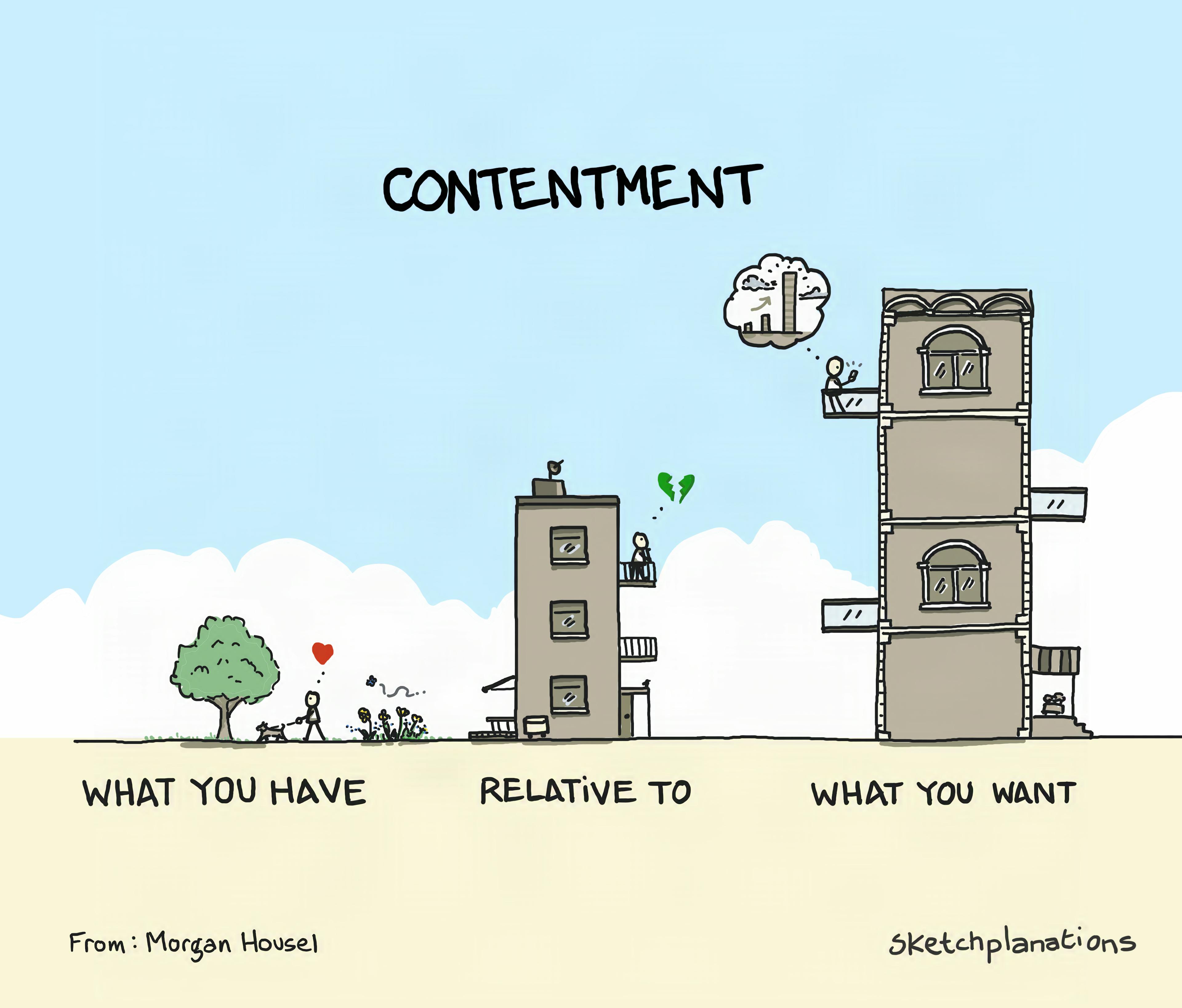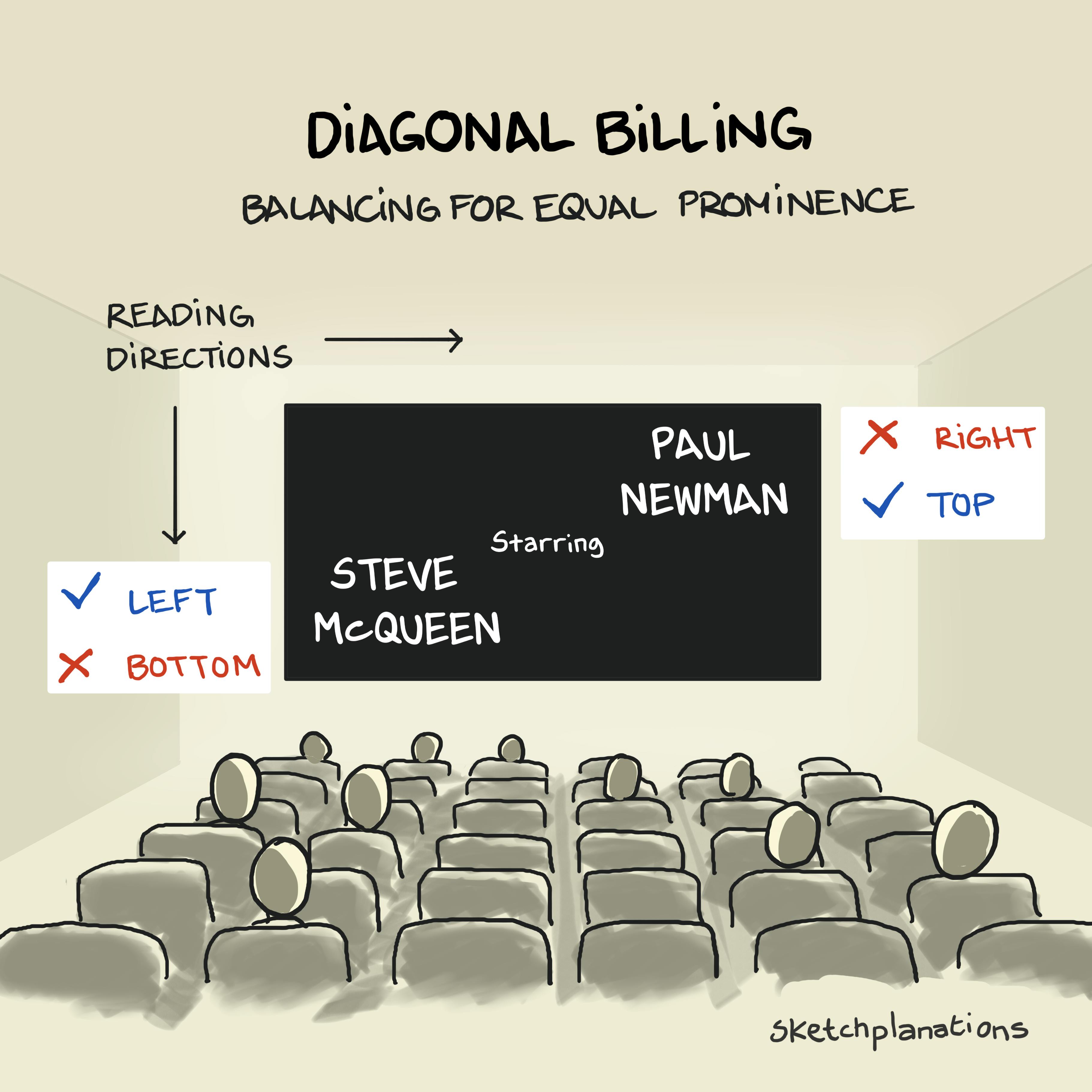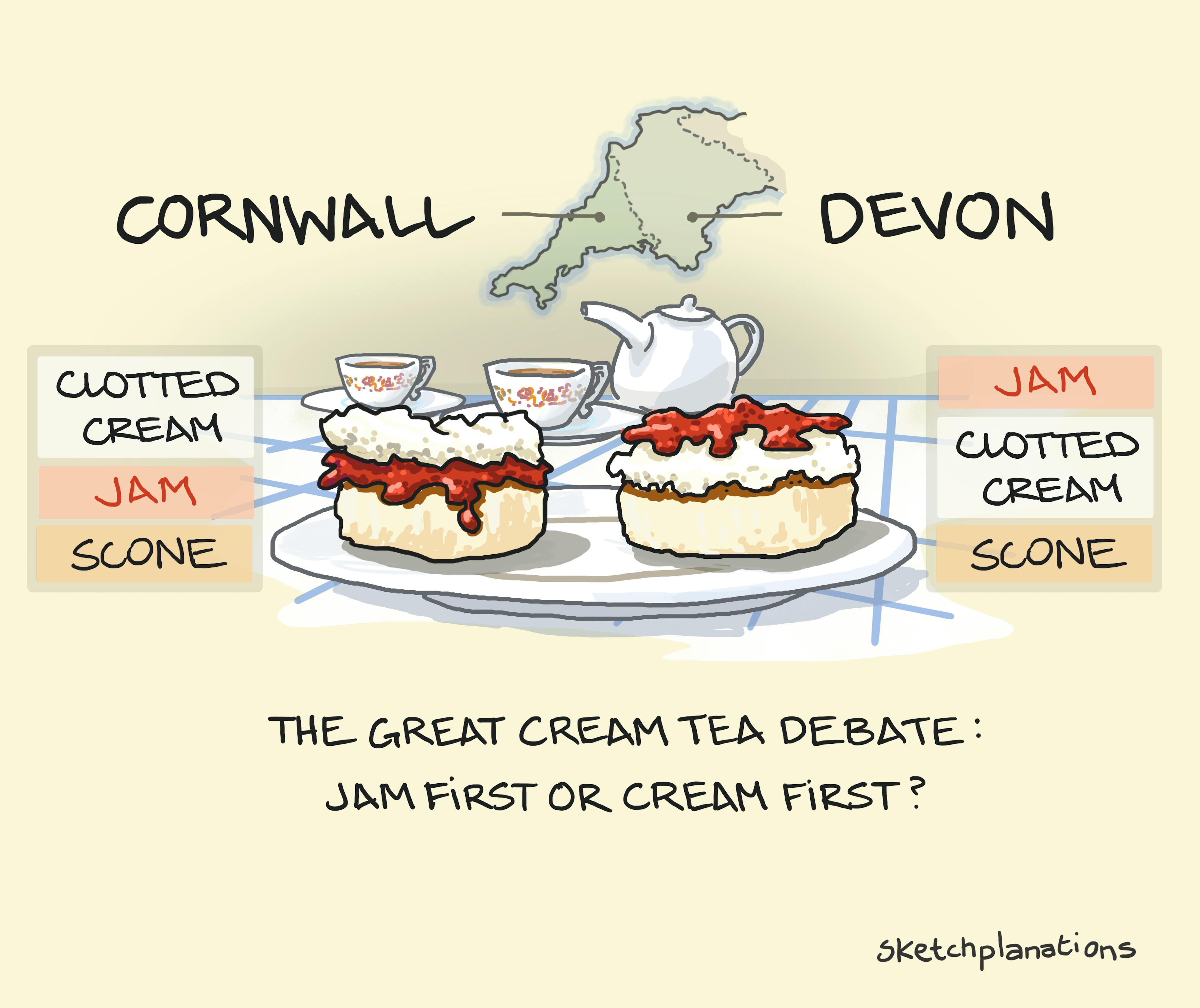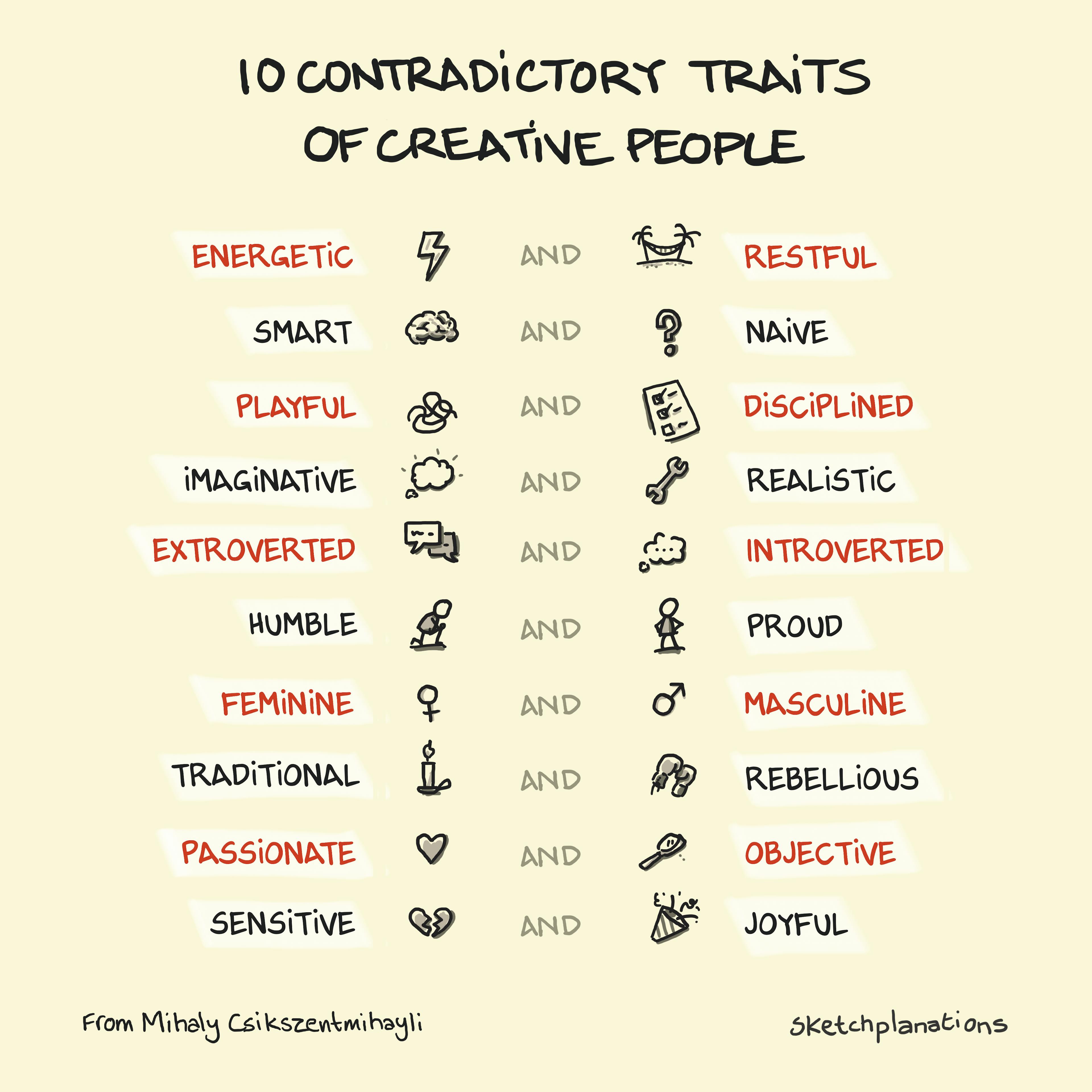
Contentment: What you Have Relative to What you Want
Morgan Housel, in his book The Art of Spending Money, says that contentment is what you have relative to what you want. If you have money for a life full of comforts but envy a more glamorous one, you will make yourself unhappy. If you have a simple life with friends, family, health, and interests, and don’t want anything more, then you will be happy as you are. Money makes this visible, but the same rule applies to almost everything: time, relationships, status, health, and freedom. Being content with what you have is a counter to the hedonic treadmill: how people can easily get used to a better situation and start longing for the next thing (been on the list to sketch for a long time!). As Morgan says, “If your expectations grow faster than your income, you will never be happy with your money.” It’s funny how knowing that someone or something has something better can affect your own satisfaction with what you have. “If I hadn’t seen such riches, I could live with being poor.” — from Sit Down by James (video) I think about this song line quite often. One of my favourite perspective shifts on this is comedian Louis C.K.’s Everything is Amazing, and Nobody is Happy clip with Conan O’Brien. He captures brilliantly how quickly our sense of what is normal inflates, even as life objectively improves. Low expectations? In a class on utility theory long ago, I remember mathematically seeing that if you expect little value, then you’ll be satisfied with whatever you get. And I’ve heard it said that the secret to happiness is low expectations. There’s something in it for sure, but it always seems like a double-edged sword to me. Sure, if you expect your team to lose every time, you might not be bothered when they do. But if you hope that they’ll win, you can get some happiness from that excitement, too. It’s always intriguing how supporters of better teams get more frustrated when they do slightly worse than usual, even while they are still doing much better than my team. Expectations are tricky. It’s so easy to recalibrate what counts as normal. You can skip the ups and downs of supporting a team by not supporting one and not caring what happens. You avoid the downs, but you miss the ups, too. (see The Supporter’s Paradox in Big Ideas Little Pictures) The late Queen Elizabeth II said it beautifully: "Grief is the price we pay for love." — Queen Elizabeth II You can skip the grief by not loving, but that seems a shame. How life feels depends on what we expect as much as what we get. Related quotes "Annual income twenty pounds, annual expenditure nineteen nineteen and six , result happiness. Annual income twenty pounds, annual expenditure twenty pounds ought and six, result misery." ― Mr. Micawber in David Copperfield by Charles Dickens "Comparison is the thief of joy" — Often attributed to Theodore Roosevelt, but from various sources Related Ideas to Contentment Also see: Five Ways to Wellbeing Spend better: If money doesn’t make you happy, you’re not spending it right “If this isn’t nice, I don’t know what is.” Flow: state of total focus and joy Prospect Theory Languishing The irresistible power of variable rewards The Overview Effect Don’t compare your back of house with other’s front of houseMorgan Housel, in his book The Art of Spending Money, says that contentment is what you have relative to what you want. If you have money for a life full of comforts but envy a more glamorous one, you will make yourself unhappy. If you have a simple life with friends, family, health, and interests, and don’t want anything more, then you will be happy as you are. Money makes this visible, but the same rule applies to almost everything: time, relationships, status, health, and freedom. Being content with what you have is a counter to the hedonic treadmill: how people can easily get used to a better situation and start longing for the next thing (been on the list to sketch for a long time!). As Morgan says, “If your expectations grow faster than your income, you will never be happy with your money.” It’s funny how knowing that someone or something has something better can affect your own satisfaction with what you have. “If I hadn’t seen such riches, I could live with being poor.” — from Sit Down by James (video) I think about this song line quite often. One of my favourite perspective shifts on this is comedian Louis C.K.’s Everything is Amazing, and Nobody is Happy clip with Conan O’Brien. He captures brilliantly how quickly our sense of what is normal inflates, even as life objectively improves. Low expectations? In a class on utility theory long ago, I remember mathematically seeing that if you expect little value, then you’ll be satisfied with whatever you get. And I’ve heard it said that the secret to happiness is low expectations. There’s something in it for sure, but it always seems like a double-edged sword to me. Sure, if you expect your team to lose every time, you might not be bothered when they do. But if you hope that they’ll win, you can get some happiness from that excitement, too. It’s always intriguing how supporters of better teams get more frustrated when they do slightly worse than usual, even while they are still doing much better than my team. Expectations are tricky. It’s so easy to recalibrate what counts as normal. You can skip the ups and downs of supporting a team by not supporting one and not caring what happens. You avoid the downs, but you miss the ups, too. (see The Supporter’s Paradox in Big Ideas Little Pictures) The late Queen Elizabeth II said it beautifully: "Grief is the price we pay for love." — Queen Elizabeth II You can skip the grief by not loving, but that seems a shame. How life feels depends on what we expect as much as what we get. Related quotes "Annual income twenty pounds, annual expenditure nineteen nineteen and six , result happiness. Annual income twenty pounds, annual expenditure twenty pounds ought and six, result misery." ― Mr. Micawber in David Copperfield by Charles Dickens "Comparison is the thief of joy" — Often attributed to Theodore Roosevelt, but from various sources Related Ideas to Contentment Also see: Five Ways to Wellbeing Spend better: If money doesn’t make you happy, you’re not spending it right “If this isn’t nice, I don’t know what is.” Flow: state of total focus and joy Prospect Theory Languishing The irresistible power of variable rewards The Overview Effect Don’t compare your back of house with other’s front of houseWWW
Read more…






